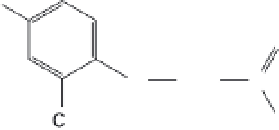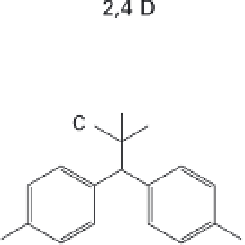Environmental Engineering Reference
In-Depth Information
order to minimize grain losses, requires artificial drying.
This is especially the case with U.S. corn; harvested at
moistures up to 28%, most of this large crop is dried.
LPG and electricity are the principal energizers. Typical
rates are 600-750 kJ/kg of grain dried to storage mois-
ture of 14%. For corn this would represent costs of 3-6
GJ/ha, a small part of overall energy subsidies but a crit-
ical finishing input.
Published energy costs of individual crops are not
readily comparable because of the nonuniform choice of
analytical boundaries and sometimes substantial differ-
ences in input equivalents. Many analyses stop at the
farm gate, others add just the leading indirect subsidies
(fertilizers and pesticides), and yet others make system-
atic efforts to account for energies used to make and
maintain field machinery. In general, energy analyses of
crops will have wider error margins than those of mass-
produced industrial goods. Field extremes of modern
farming are marked by extensive North American wheat
cropping (6-10 GJ/ha) and by establishing a vineyard
for table grapes, an effort costing some 200 GJ/ha for
several years before the first harvest.
Typical annual rates are 8-15 GJ/ha for dryland
cereals, 20-25 GJ/ha for rain-fed, and more than 40
GJ/ha for irrigated Corn Belt corn and California rice.
Nitrogen-fixing soybeans need no more than 8-15 GJ/
ha, but potatoes, vegetables, and tree crops, with heavy
fertilization and irrigation, need 50-100 GJ/ha, and or-
ange groves require about 120 GJ/ha. Even these rates
are dwarfed by hydroponic cultivation in greenhouses,
where energy consumption is determined above all by
the need for seasonal heating. In warm climates opera-
tion costs are dominated by irrigation, fertilization, and
cultivation needs. Turkish rates (with some supplemental
heating) range from 2.5 GJ/t of tomatoes to 4.3 GJ/t of
10.10 Molecular structures of the world's first effective herbi-
cide, 2,4-D, and the first widely used insecticide, DDT. From
Smil (2006).
200-300 MJ/kg; means of 220, 270, and 275 MJ/kg
were given as representative of U.S. applications (Helsel
1987; T. A. Unger 1996). The usual recommended
applications are 1-2 kg/ha, so even the use of the most
energy-intensive compounds will translate to subsidies no
higher than 1 GJ/ha, and the typical rates in those fields
where the crop is treated by both herbicides and insecti-
cides will be 0.5-1 GJ/ha. The annual global energy
investment in pesticide production was about 500 PJ
during the 1990s.
For many grain farmers, harvesting does not end en-
ergy expenditures. Long-term storage and long-distance
transportation require that grains have their water con-
tent reduced below the levels allowing germination,
insect propagation, and fungal growth. Modern mechan-
ical harvesting, often done at relatively high moisture in




















